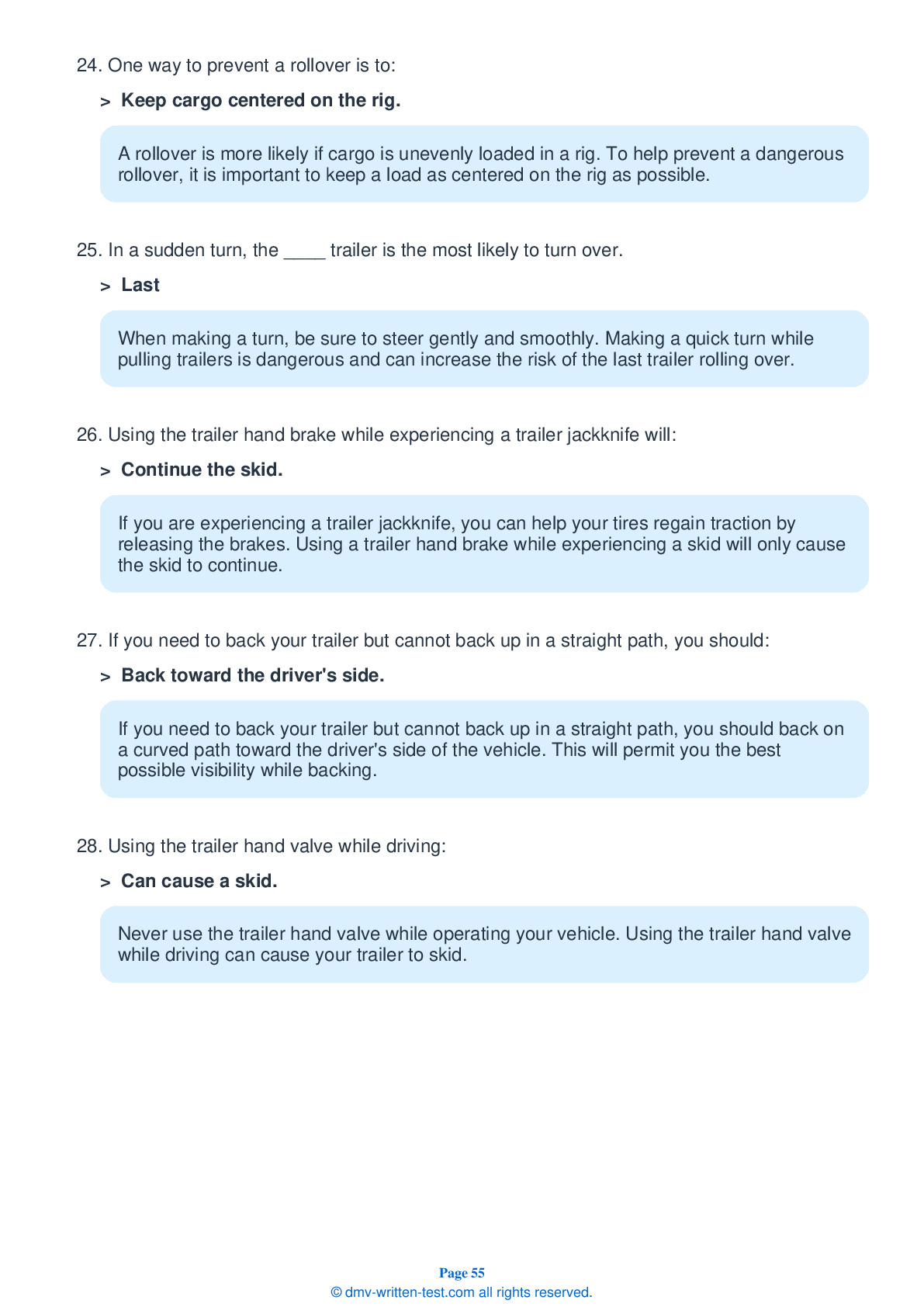Air Brakes
This endorsement is required for driving a vehicle with air brakes. To receive this endorsement, applicants must pass a written test. The test consists of 25 multiple choice questions. Each question has three answer choices. To pass, the applicant must answer at least 20 questions correctly. Test questions come from the Louisiana Commercial Driver License Manual. Questions come from the chapter covering: Air Brakes. The Air Brakes endorsement may be used with the Class A, B or C CDL.
Number of Question
Passing Score
1. Failing to drain air tanks could result in:
Explanation
In an air brake system, the air tanks must be periodically drained to remove accumulations of water and compressor oil. If water is not removed, it could freeze in cold weather and cause brake failure.
2. If you are braking on dry pavement while traveling at 55 mph, how much distance will brake lag add to your overall stopping distance?
Explanation
The total stopping distance for vehicles equipped with air brakes is made up of four factors: perception distance, reaction distance, brake lag distance, and braking distance. When braking at a speed of 55 mph while driving on dry pavement, the brake lag can add around 32 feet to the vehicle's total stopping distance.
3. The leakage rate for a single vehicle with air brakes should be no more than ____ in one minute during a static leakage test.
Explanation
When performing a static leakage test on a single vehicle with air brakes, the leakage rate should be no more than 2 psi in a minute. If the air leaks from the air brake system at a quicker rate, the vehicle should not be driven because something likely needs to be repaired.
4. An alcohol evaporator is especially important:
Explanation
Some air brake systems contain an alcohol evaporator. This evaporator introduces alcohol into the system to help prevent ice from forming in cold weather.
5. When an S-cam turns inside a brake drum, the S-cam:
Explanation
When a brake pedal is pressed and the S-cam is turned, the S-cam presses the brake shoes against the inside of the brake drum. This causes friction and will cause the vehicle to slow.
6. When leaving your vehicle unattended:
Explanation




